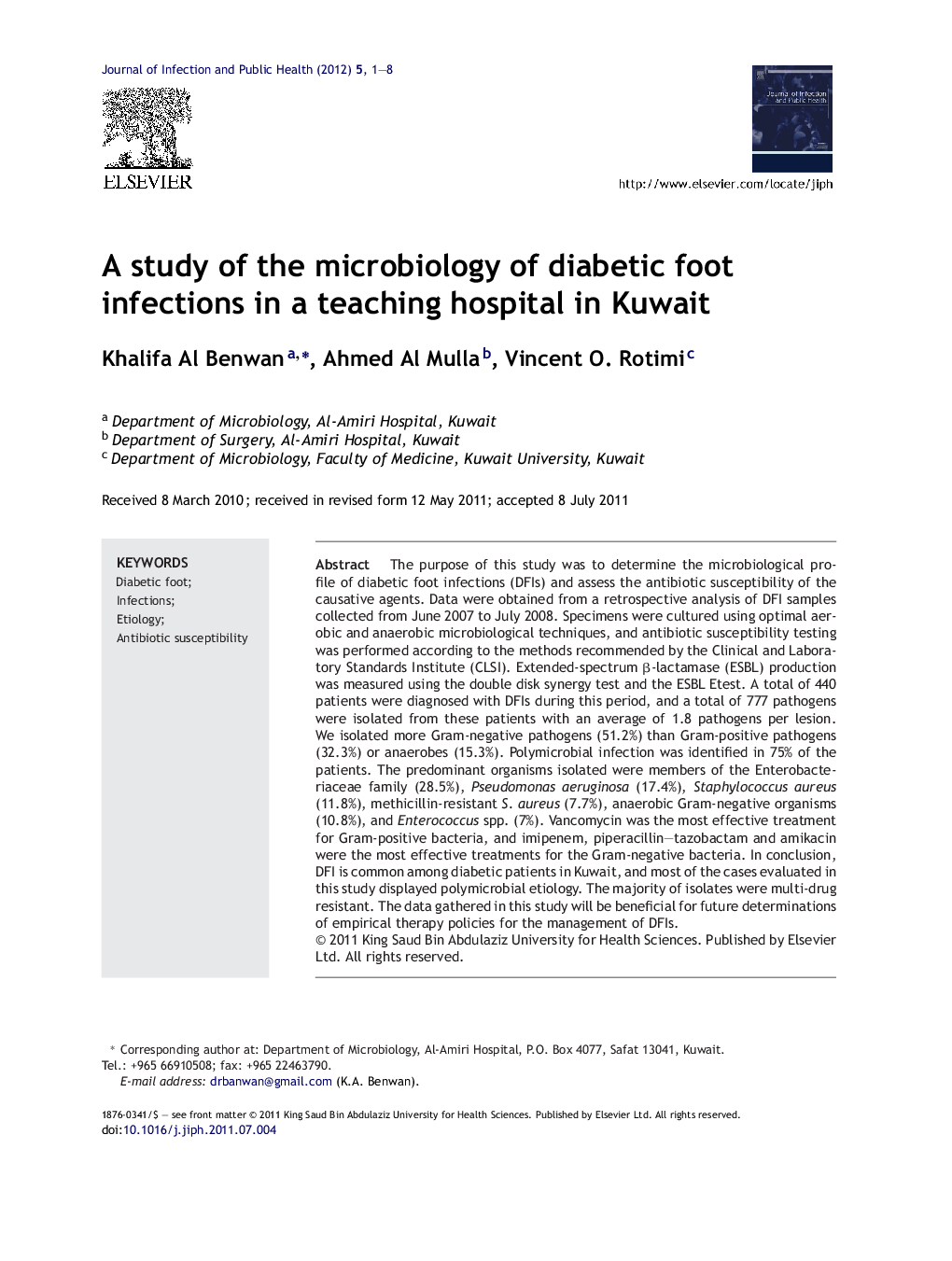| Article ID | Journal | Published Year | Pages | File Type |
|---|---|---|---|---|
| 3406159 | Journal of Infection and Public Health | 2012 | 8 Pages |
The purpose of this study was to determine the microbiological profile of diabetic foot infections (DFIs) and assess the antibiotic susceptibility of the causative agents. Data were obtained from a retrospective analysis of DFI samples collected from June 2007 to July 2008. Specimens were cultured using optimal aerobic and anaerobic microbiological techniques, and antibiotic susceptibility testing was performed according to the methods recommended by the Clinical and Laboratory Standards Institute (CLSI). Extended-spectrum β-lactamase (ESBL) production was measured using the double disk synergy test and the ESBL Etest. A total of 440 patients were diagnosed with DFIs during this period, and a total of 777 pathogens were isolated from these patients with an average of 1.8 pathogens per lesion. We isolated more Gram-negative pathogens (51.2%) than Gram-positive pathogens (32.3%) or anaerobes (15.3%). Polymicrobial infection was identified in 75% of the patients. The predominant organisms isolated were members of the Enterobacteriaceae family (28.5%), Pseudomonas aeruginosa (17.4%), Staphylococcus aureus (11.8%), methicillin-resistant S. aureus (7.7%), anaerobic Gram-negative organisms (10.8%), and Enterococcus spp. (7%). Vancomycin was the most effective treatment for Gram-positive bacteria, and imipenem, piperacillin–tazobactam and amikacin were the most effective treatments for the Gram-negative bacteria. In conclusion, DFI is common among diabetic patients in Kuwait, and most of the cases evaluated in this study displayed polymicrobial etiology. The majority of isolates were multi-drug resistant. The data gathered in this study will be beneficial for future determinations of empirical therapy policies for the management of DFIs.
► We studied bacteriology of diabetic foot ulcers and assessed their susceptibility. ► The diabetic foot infections were commonly associated with polymicrobial etiology. ► S. aureus and P. aeruginosa were the most common single agents. ► Data suggest that empirical coverage includes imipenem or pip-tazo and vancomycin.
